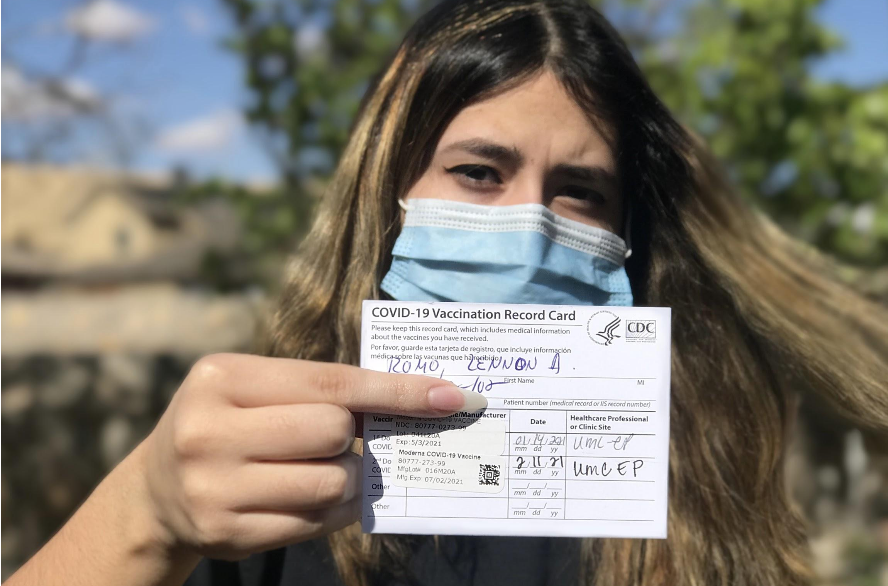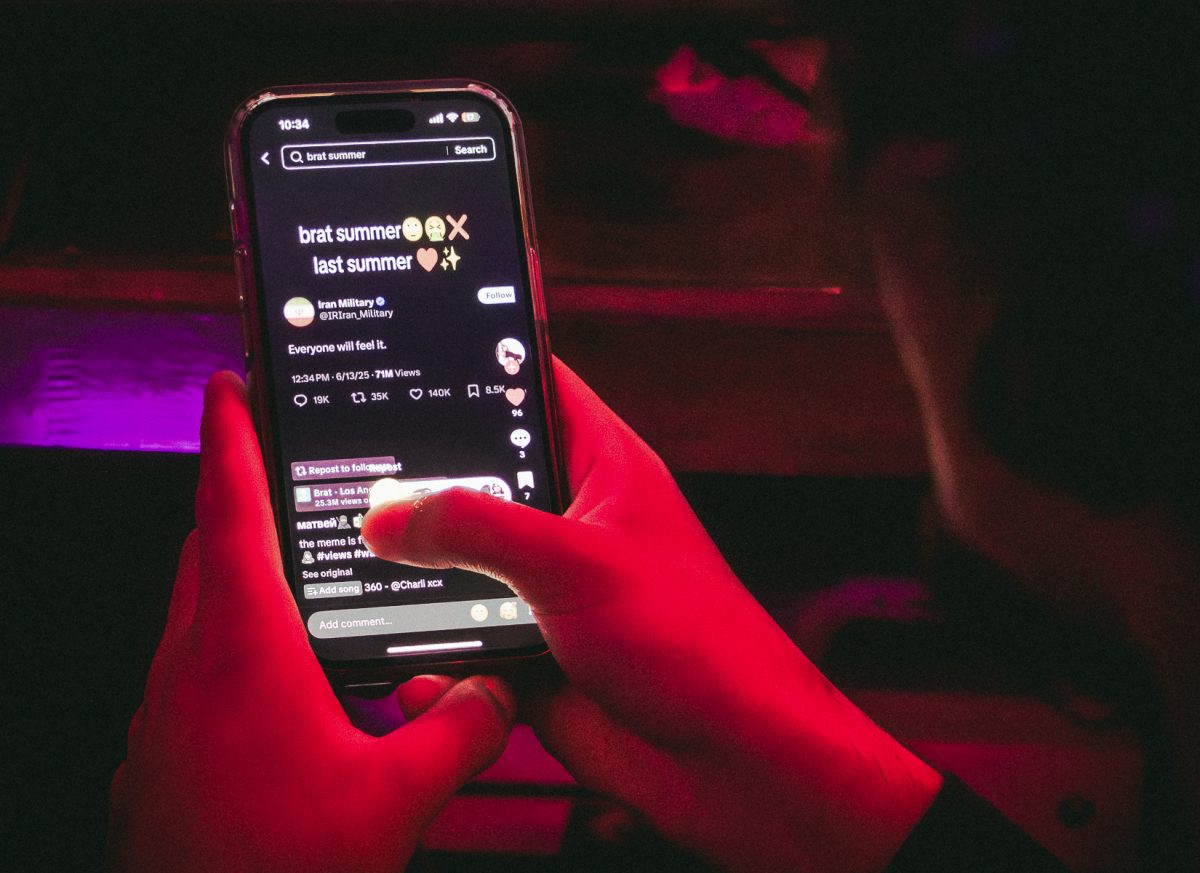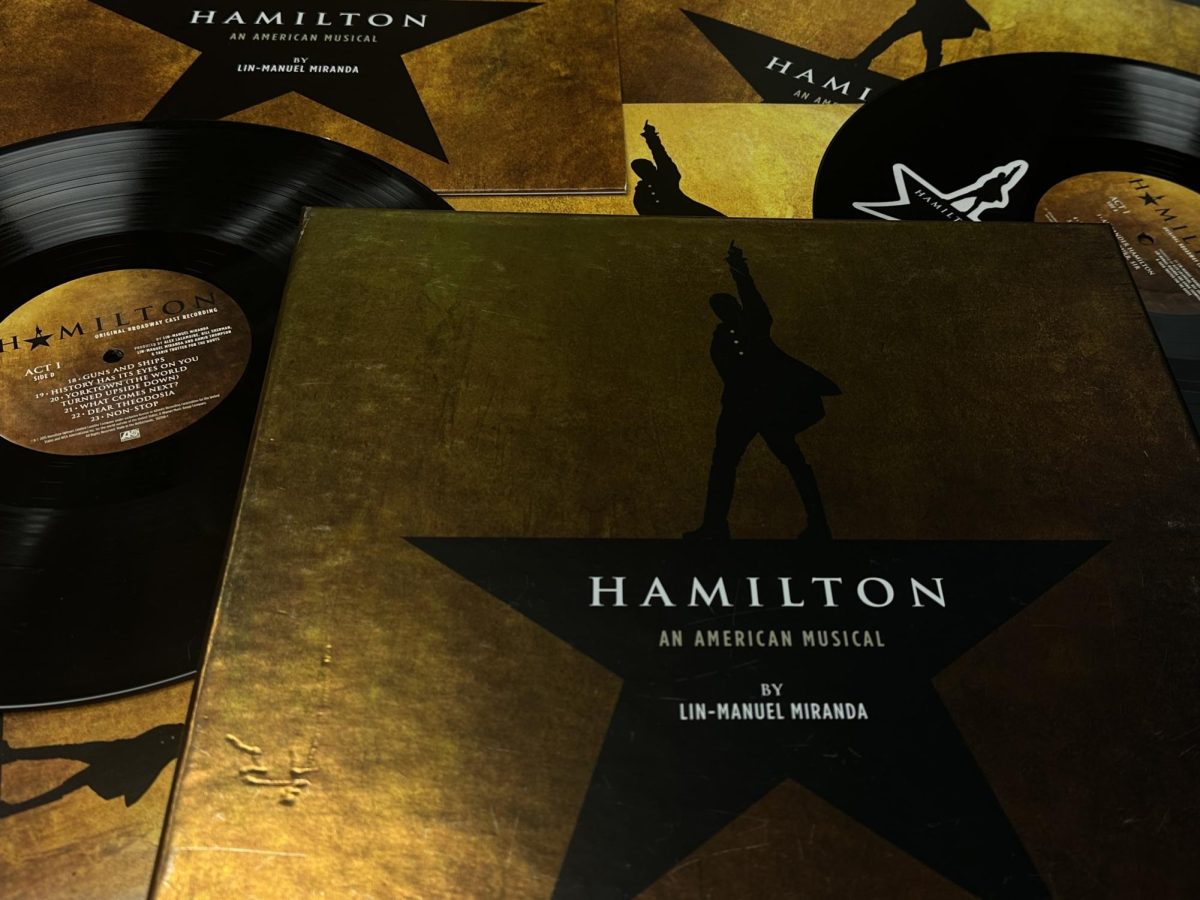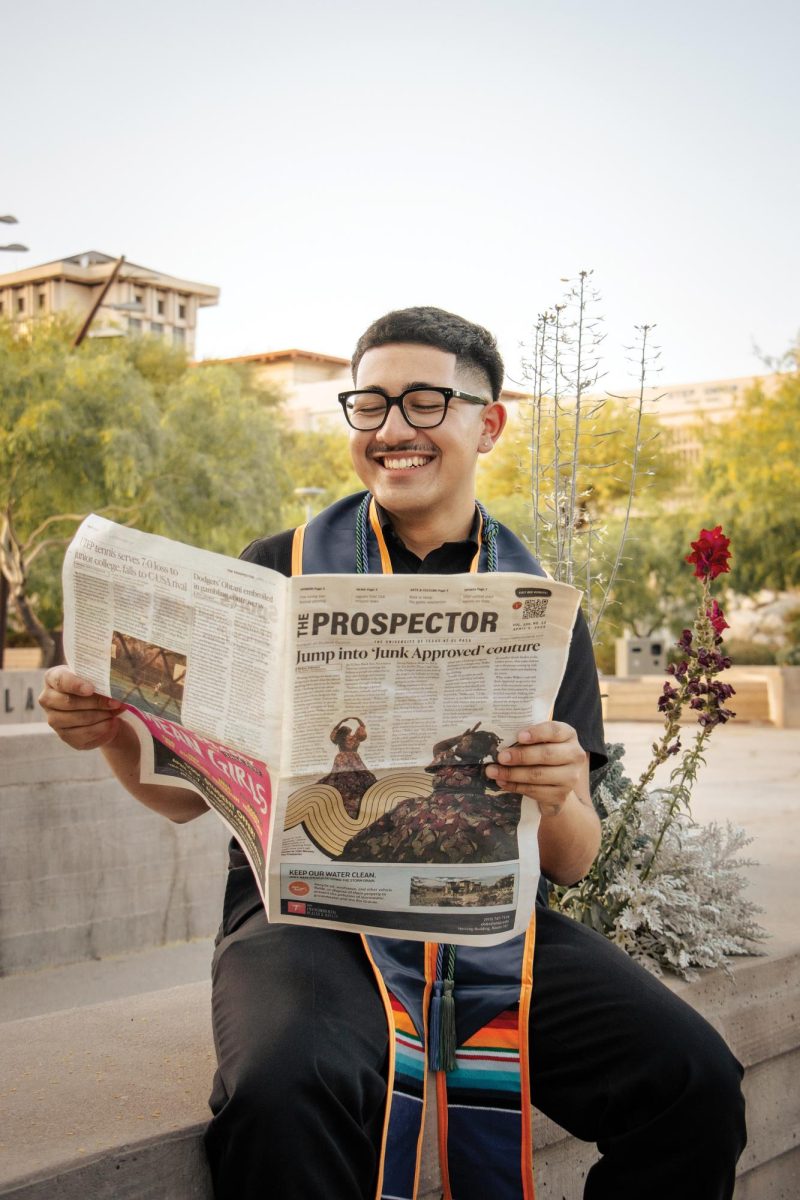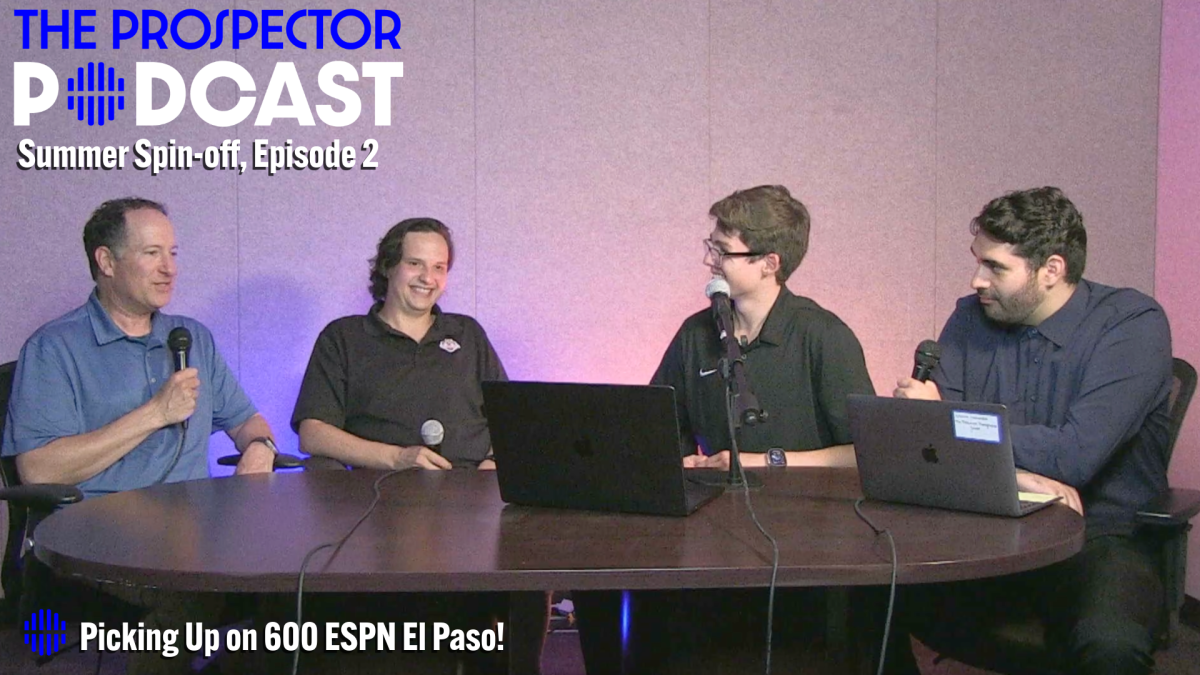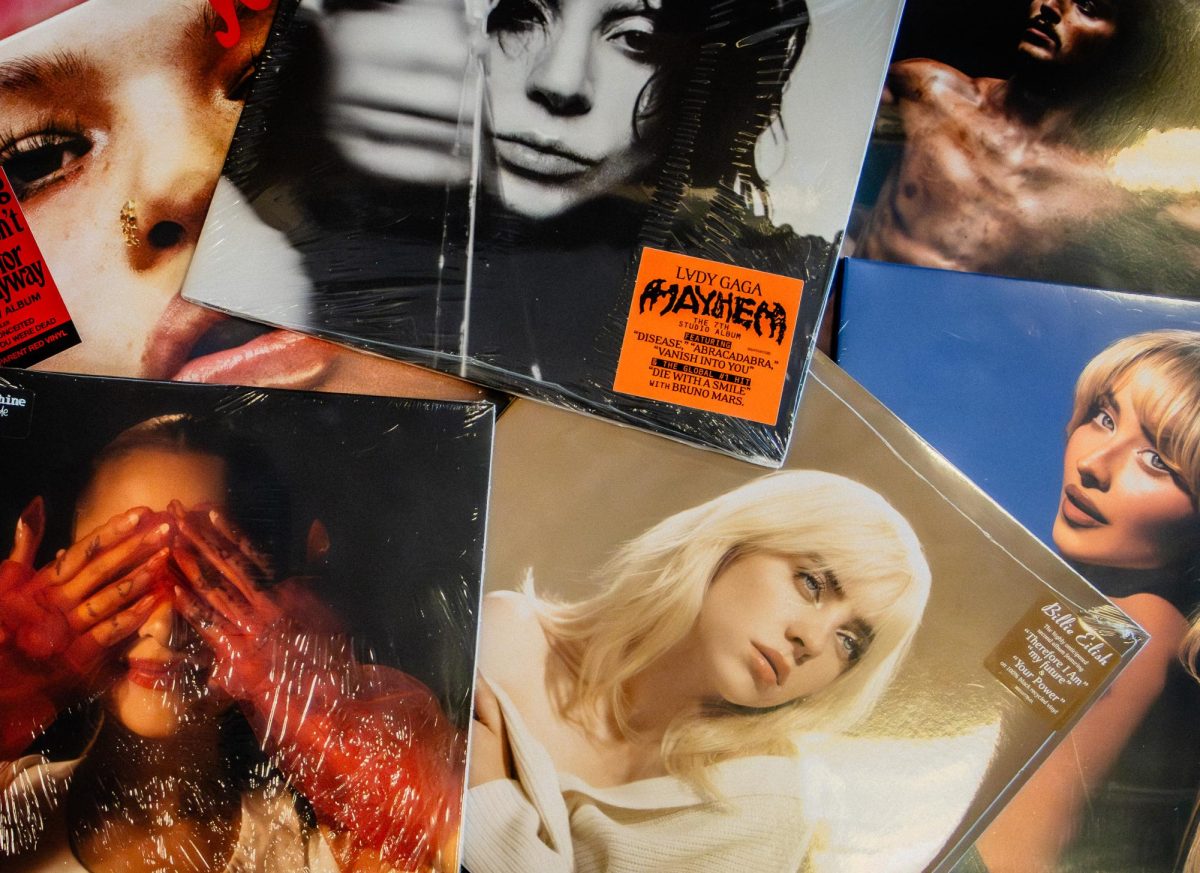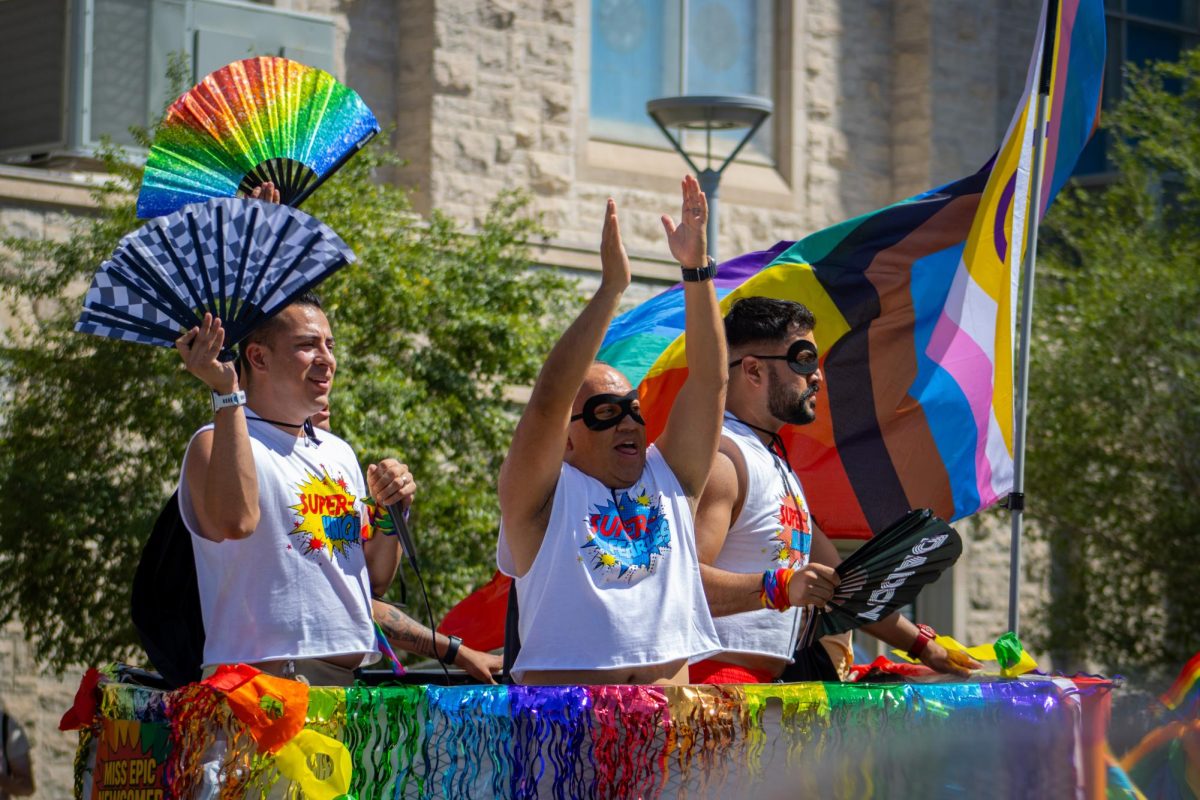The air was cold on the morning of Thursday January14th, and there I stood in line silently among hundreds of fellow El Pasoans, all of us waiting to get our first dose of the Covid-19 Moderna vaccine.
After months of controversy, debate, and human trial and error, the vaccine finally made its way into my hometown of El Paso, Texas. In a city of justover 600,000 people, only small pockets of the vaccine were made available for the health imparied, including individuals like myself in Phase 1C, and there I was, awaiting my turn. A sort of tension seemed to wash over us all. A haunting stillness and unnerving silence fell upon the lines of people snaking about the lot.
There were several white tents set up in a parkinglot outside of University Medical Center of ElPaso. Beyond the plume of shrouded coverings, people would go through the process of signing disclosures , getting the vaccine, and waiting 15 minutes to be observed for any immediate side-effects. Due to the number of people as well as the length of time it took to go through each step, it was a process that spanned over three hours before my family and I were able to receive our vaccination and head back home.
Just as many others, rumors of reactions to the vaccine ranging from further illness to even death filled my mind. To date, the CDC’s Vaccine AdverseEvent Reporting System, or VAERS, has noted that there have been 472 deaths following the Moderna vaccine, and 489 following the Pfizer vaccine. The vaccine laid out for me beyond the curtain felt like I was taking part in agame of Russian Roulette. Could the unknown outweighthe certain, spiraled through my every
thought.
As a young asthmatic Latina with a family history of ailments, I clenched my EPIPEN and inhaler all day, not knowing what the next few hours would bring. The irony of receiving this “potentially” life-saving vaccine, coupled with the true possibility that the effects could kill me, haunts me still.
After six weeks and my second dosage, I find I am still doing well. Albeit having experienced a few intense, yet, common side effects such as soreness and chills to name a few, I can say getting the vaccine was well worth the temporary discomfort and risks. In a world where a virus is ravaging countless countries, especially the United States, I am grateful we have the opportunity to make strides in fending off and possibly stifling further upward trends.
To date, COVID-19 has affected over 30.2 million Americans, and brought with it more than half a million deaths. Closer to home, El Paso has seen over 128,000 cases, and over 2,300 deaths, according to data released by the city. From the onset of the vaccine’s creation, to the development of now numerous options, the debate on vaccinations remains prevalent. In a response to the hesitance from people still worry about getting vaccinated, Dr. Anthony Fauci, who received the Moderna vaccine, said the following: “You need to get vaccinated when it (the vaccination) becomes available, as quickly and expeditiously as possible throughout the country. And the reason for that, is that there is a fact that permeates virology, and that is that viruses cannot mutate if they don’t replicate.”
The virus has proven to be almost magnetic to particular races and ethnicities. Here in El Paso,with a population of 81.4% Latinos, there is a cause for concern. According to the CDC, Hispanics’s risk for COVID-19 comes with staggering upward trends. The infection rate for this population is well over that of its caucasian counterparts. Our minority group is 1.3 times more likely to become infected by COVID-19.
Additionally, the likelihood of hospitalization is 3.1 times higher,and chance of succumbing to the virus rests at 2.3 times more likely. There are a variety of reasons why many remain reluctant to offer their arms to the needle; these can range from the fear of the unknown, concern over the rush to mass produce a vaccine, and the risk of death should your body reject the foreign substance.Though understandable hesitant to get the vaccine,it is becoming even more important to get vaccinated if given the opportunity.
The term “COVIDfatigue” has been coined for individuals seeking to get back to a “pre-pandemic” state. If this is ever to be achieved, a larger percentage of the population must progress towards becoming fully vaccinated.
The possibility for lessening state restrictions and giving rise to nods of normalcy should be another driving force for individuals to consider.The rise of new and more infectious variants of COVID-19, like the California variant that makes up 50% of cases in 44 of the state’s counties,bring about an even greater cause for concern. For a city that was in recent months known as the epicenter of Texas and the United States, we have clawed our way out from under this shadow; now we must continue to make strides.
One must acknowledge there are questions regarding the validity and rush for the mass production of COVID-19 vaccines. Some may question not only the effectiveness, but the ramifications yet to be discovered when it comes to long term health impairments. The fear of the vaccines that were developed within a short amount of time have been known to have more intense effects than a typical flu shot; it makes sense why some would still be skeptical about getting the vaccine.
Dr. Jaddish Khubchandani, a professor of public health at New Mexico State University, recently addressed this skepticism when he conducted research about the hesitancy among Americans to get vaccinated.
In an interview with KVIA, he is quoted as saying he “hopes this study will make the government and public authorities find better ways to communicate with these populations (Latinos)…the vaccine work has been going on for decades. It didn’t just happen over nine months.Yes the vaccine was made in nine months but the prior research has taken decades and decades.”
For those still pondering whether or not to take a leap of faith and sign up for any opportunity to receive a vaccine, I say this: I was also scared of how taking the vaccine would have affected my health. I remain concerned about what lasting impacts this might turn out to have in the long run.In the end, however, my fear of contracting the virus itself outweighed my fear of the vile.
For your consideration, these are the symptoms I experienced with each respective dose of theModerna COVID-19 vaccine.
For the first dose, the side effect which I experienced was intense soreness of my arm. A burning sensation had begun to radiate at the injection site about 5 hours after receiving the vaccine. All through the night, I was unable to move without inflicting a sharp stinging pain, and my arm remained fully sore and stiff the next day. However, the pain began to subside two days later, and by the fourth day I was fully recovered.
With my second dose, I ended up having multiple side-effects. The sharp pain returned, but this time I experienced intense chills and had a temperature that rose to 99.5 Fahrenheit. Musclepain spread throughout my body and lingered for three days after getting the vaccine but diminished almost entirely after that period.
I share this information with the UTEP community as it is important to acknowledge the concern and unspoken fears that are tied to being vaccinated. My minor discomforts pale in comparison to that of individuals who have experienced and/or succumb to the disease.
To date, I have not experienced any long term effects from either dose of the vaccine. I feel that is a worth while cause for other El Pasoans to schedule their appointments to become fully vaccinated. Yes, the typical effects had stronger impacts , but they were nonetheless still temporary.
While my generation hasn’t necessarily been seen flocking towards vaccination sites in masses likely due to the rollout, I believe college students should make every effort to increase the numbers of vaccinated persons within Texas.
Across the city of El Paso vaccination sites and doses are being offered to our community,including at our very own UTEP campus. As of March 29, Texas has opened COVID-19 vaccine appointments to everyone 16 and older. Imelda Garcia from the Texas Department of State and Health Services said, “We are closing in on 10 million doses administered in Texas, and we want to keep up the momentum as the vaccine supply increases.”
The fact of the matter is COVID-19 isn’t going away soon. People tend to think life will magically return to normal one day, perhaps it’s wishful thinking. The hesitancy of many individuals to get vaccinated, the relaxing of restrictions , and the notion of “COVIDfatigue” is brewing the perfect storm for a resurgence.We have the opportunity to make inroads in the right direction. We may feel that we have given up too much already, but our experiences are not fully lost yet. We have the chance to make strides in the direction of progress versus stagnation. Now all that remains to be seen is what we chose to do for ourselves and the generations far beyond us.

